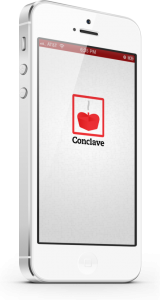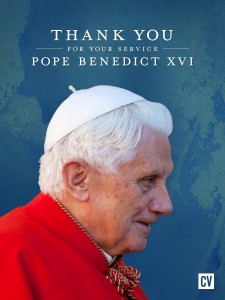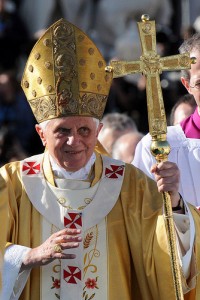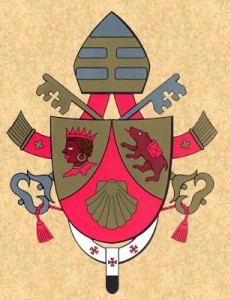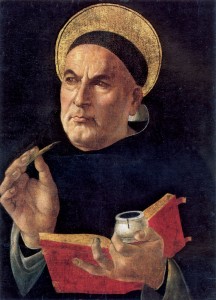Conclave Roundup!
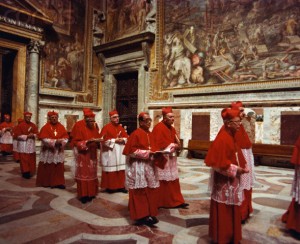 Preparing for the next pope is quite a process, and in case you’ve been under a rock for the last few weeks you’ve probably been exposed to the gamut of excitement, coverage, speculation, and general hoopla that surrounds the election of the next Successor of Peter. I particularly enjoy all of the oddsmaking and punditry, but the fact of the matter is that nobody knows who will be the next pope yet because the Cardinals don’t even know yet. The first week or so of the conclave consists of general sessions and meet-and-greet opportunities for the Cardinals, because many of them have never met each other. During these sessions, they get to know one another and assess the state of the Church and the problems it faces as they look to the future. It is only then that the profile or dossier of the next pope begins to take shape… they try to find the right person to lead the Church from now moving forward, and there’s not exactly a rubrick to follow to include or exclude candidates.
Preparing for the next pope is quite a process, and in case you’ve been under a rock for the last few weeks you’ve probably been exposed to the gamut of excitement, coverage, speculation, and general hoopla that surrounds the election of the next Successor of Peter. I particularly enjoy all of the oddsmaking and punditry, but the fact of the matter is that nobody knows who will be the next pope yet because the Cardinals don’t even know yet. The first week or so of the conclave consists of general sessions and meet-and-greet opportunities for the Cardinals, because many of them have never met each other. During these sessions, they get to know one another and assess the state of the Church and the problems it faces as they look to the future. It is only then that the profile or dossier of the next pope begins to take shape… they try to find the right person to lead the Church from now moving forward, and there’s not exactly a rubrick to follow to include or exclude candidates.
With all that being said, the Internet is abuzz with some truly great resources for finding out more about the conclave and keeping tabs on the latest news from the Holy See. Now that the Cardinals have set a date for the conclave (March 12) and the chimney is up, it’s time to get ourselves prepared to welcome a new pontiff.
How does a pope get elected?
This interactive slideshow explains the process of the papal election, with animations and points of interest that explain facts about the conclave process. The most interesting fact that I learned from this slideshow is that the papal tailor makes the vestments in three different sizes to match differing body types, so that they’re ready for the new pontiff (whoever he is). This made me imagine a closet somewhere in the Vatican full of tiny little pope outfits and big jolly pope outfits from years past.
Adopt a Cardinal
This website has been making the rounds in the Catholic blogosphere, Adopt a Cardinal randomly assigns you a Cardinal so that you can pray for them before and during the conclave process. I got Brazilian Cardinal Geraldo Majella Agnelo, Archbishop Emeritus of São Salvador da Bahia, Brazil. They’re not prescriptive about what you do once you’ve adopted a Cardinal, I used my Adoration time this week to do a rosary for the intentions of Cardinal Agnelo and that the Holy Spirit works in him to bring about the Holy Father that the Church needs.
Pope Name Predictor
This site also includes a contest: if you pick the next pope’s name correctly, you are entered to win a chance at a new iPad mini. My vote went for John Paul III, I think even though it is soon after Pope John Paul II he provides a superior example to model one’s papacy after. The other options that I feel are likely would be Leo, Pius, or John. If you want to go in with the (fairly ridiculous) Saint Malachy prophecy crowd, you can vote for Peter II or Peter the Roman. I think it’s a fun concept with a fun prize associated with it!
Pope Alarm
When I saw the title of this website, it made me laugh and then wonder why I didn’t think of something like this. You sign up for the website, enter your mobile phone number and/or email address and when the white smoke goes up you will get an alert notifying you that we have a new pope!
Conclave Mobile Application
This Conclave application by Verbum software gives you a live video feed so you can watch the white smoke rise, information about the 115 cardinal electors, official documents about the conclave and papal elections, coverage by high-quality Catholic bloggers and news sites, and a Twitter stream to read what people are saying about the conclave right now. The price is right (it’s free!) and available on both iOS or Android. You can find out more by visiting the application’s website.
I hope you find something to enjoy! Hopefully by next week we’ll have a new pope to talk about, and one of us will have that iPad mini!


